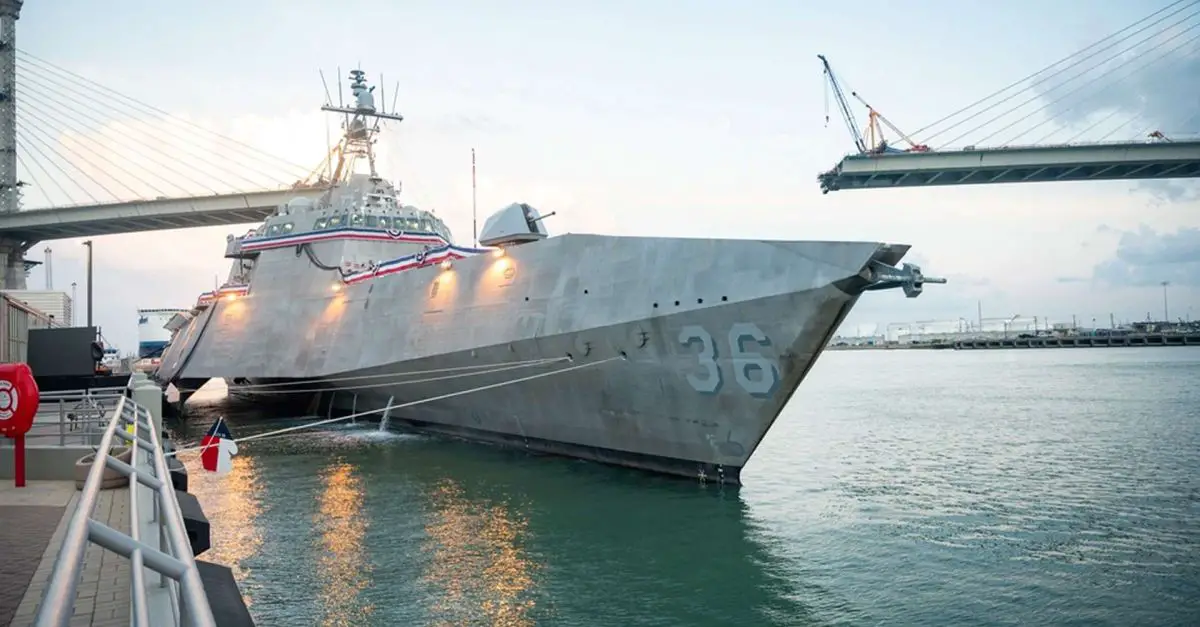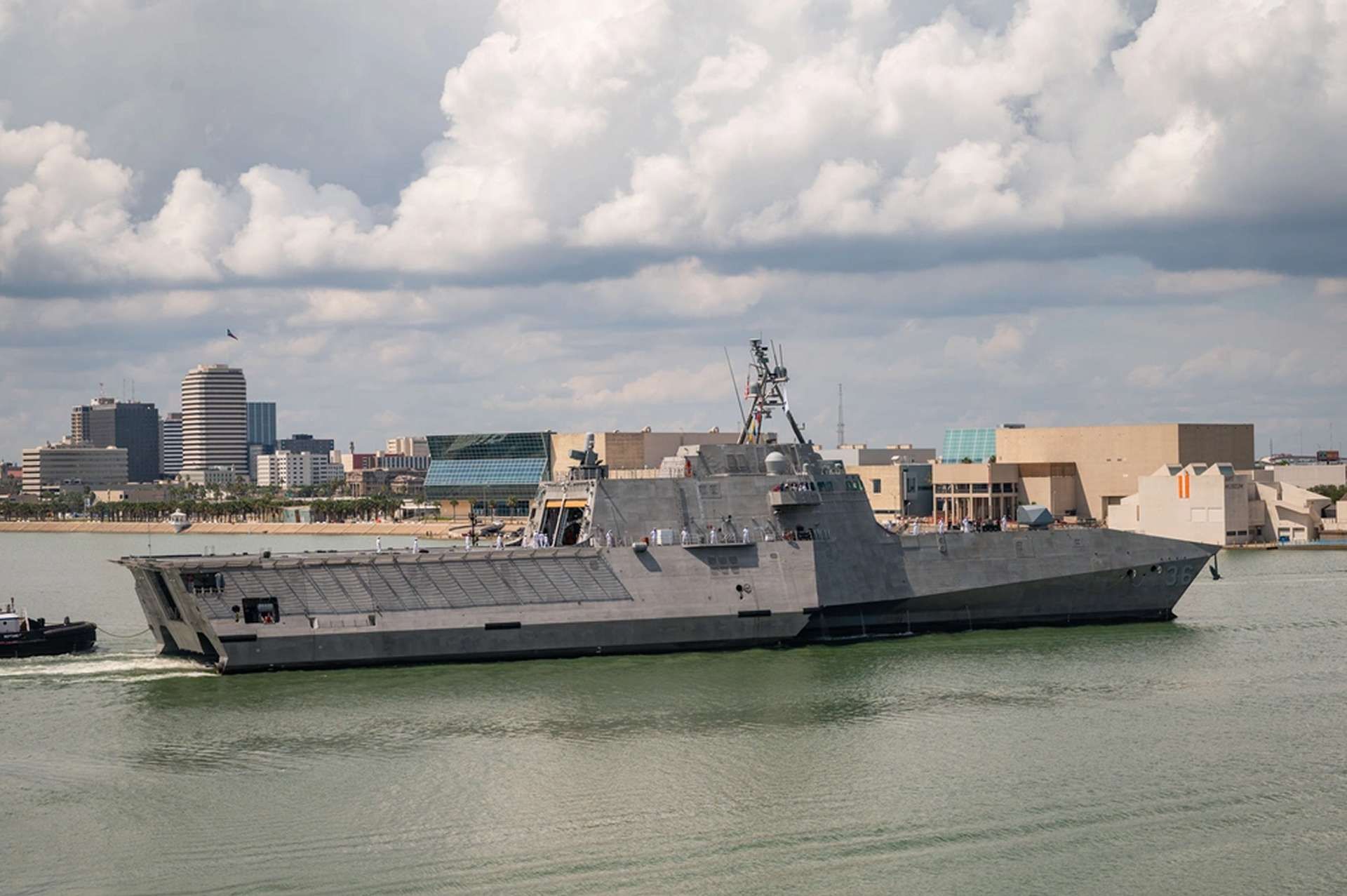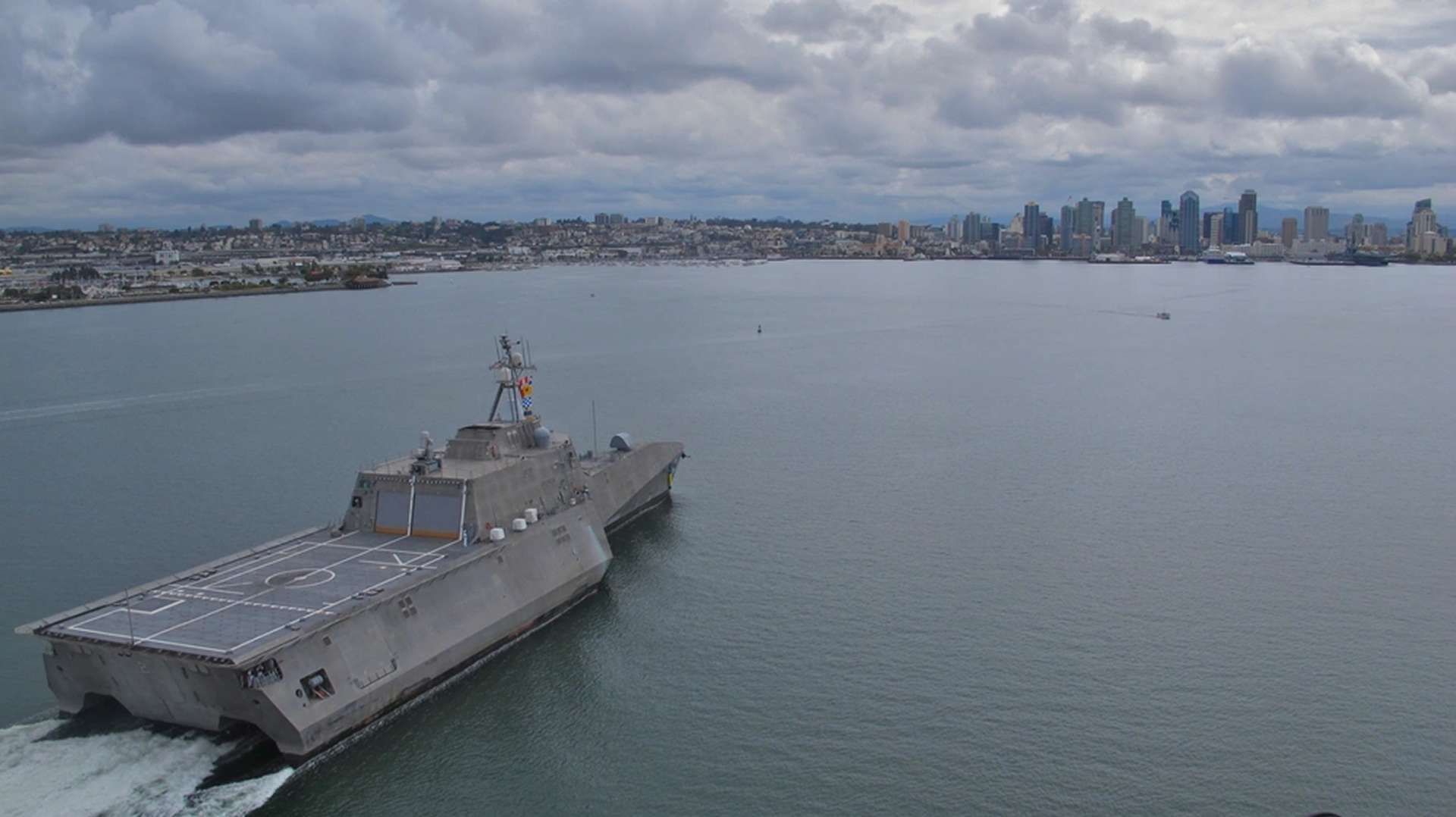Breaking News
US Navy commissions USS Kingsville as 18th Independence-class littoral combat ship.
On August 24, 2024, the U.S. Navy commissioned the USS Kingsville (LCS-36), an Independence-class littoral combat ship (LCS), during a ceremony at the Solomon P. Ortiz Center in Corpus Christi, Texas. The USS Kingsville is the first ship to bear this name, chosen in recognition of the city of Kingsville and its historical connections to U.S. military operations, particularly through the King Ranch and Naval Air Station Kingsville.
Follow Army Recognition on Google News at this link

The USS Kingsville is the 18th Independence-class littoral combat ship, a class of vessels designed for operations in both near-shore and open-ocean environments. (Picture source: US DoD)
The commissioning ceremony featured addresses by several key officials. The Assistant Secretary of the Navy for Financial Management and Comptroller, the Honorable Russell Rumbaugh, delivered the principal address. He emphasized the tradition of naming Navy ships after cities and states as a means of maintaining the Navy's connection to the nation. Other speakers included Vice Adm. Brad Skillman, Deputy Chief of Naval Operations for Integration and Capabilities and Resources; U.S. Representatives Vicente Gonzalez, Jr. and Michael Cloud; and the Mayors of Kingsville and Corpus Christi, Sam Fugate and Paulette Guajardo, respectively. The event also included a flyover by T-45C aircraft from VT-21 at Naval Air Station Kingsville.
The USS Kingsville is the 18th Independence-class littoral combat ship, a class of vessels designed for operations in both near-shore and open-ocean environments. These ships are intended to perform various missions, including maritime security, sea control, and deterrence. The USS Kingsville was constructed by Austal USA in Mobile, Alabama, laid down on February 23, 2022, launched on March 23, 2023, and christened on April 22, 2023. The Navy accepted delivery of the ship on March 1, 2024. After its commissioning, the ship will proceed to its homeport in San Diego, California.
The ship’s design is based on a trimaran hull, which provides advantages in speed and stability. It is equipped with a range of armaments, including a BAE Systems Mk 110 57 mm gun, .50 caliber machine guns, and an Evolved SeaRAM 11-cell missile launcher. The USS Kingsville also carries two MH-60R/S Seahawk helicopters. The ship’s propulsion system includes gas turbines, diesel engines, and waterjets, enabling it to achieve speeds over 40 knots, with a maximum sprint speed of 47 knots. The ship has a range of 4,300 nautical miles at a cruising speed of 20 knots.

The USS Kingsville’s propulsion system includes gas turbines, diesel engines, and waterjets, enabling it to achieve speeds over 40 knots, with a maximum sprint speed of 47 knots. (Picture source: US DoD)
The Independence-class littoral combat ships (LCS) are a series of fast, agile warships designed by Austal USA for the United States Navy, primarily intended for operations in nearshore, or littoral, environments. The design of these ships is based on a trimaran hull, initially developed for high-speed commercial ferries, which provides stability and speed. The Independence-class ships are part of a broader LCS program, which also includes the Freedom-class ships by Lockheed Martin. Both classes were initially developed to compete for a Navy contract, but ultimately, the Navy decided to commission ships from both designs. The Independence-class ships feature modular mission packages, allowing them to be reconfigured for various tasks, including surface warfare, mine countermeasures, and anti-submarine warfare.
The Independence-class ships have a lightweight aluminium construction, which contributes to their speed and agility but also makes them more susceptible to damage compared to steel-hulled ships. The class has encountered several challenges, including cost overruns, corrosion issues, and hull cracks, which have affected their operational deployment. The Navy has made improvements to the ships, such as adding bridge wings, enhancing corrosion protection, and upgrading propulsion systems. The ships' modular design allows them to be adapted for different missions, although the Navy has shifted from the original concept of frequent mission module changes to a more fixed assignment of mission sets to specific ships.
The Navy has ordered additional Independence-class ships, with a total of 19 planned, though some early vessels are being decommissioned due to the high cost of upgrades. The class has been used to test and deploy new technologies, such as the Naval Strike Missile and various unmanned systems. While the ships are capable of specific roles, their limited armament and structural issues have led to discussions regarding their long-term effectiveness. The Navy has applied lessons learned from the Independence-class to the design of future small surface combatants, focusing on improving firepower, protection, and operational efficiency.

The Independence-class ships have a lightweight aluminium construction, which contributes to their speed and agility but also makes them more susceptible to damage compared to steel-hulled ships. (Picture source: US DoD)


























